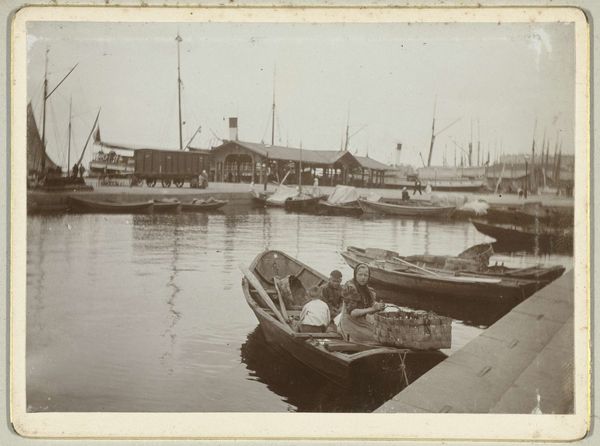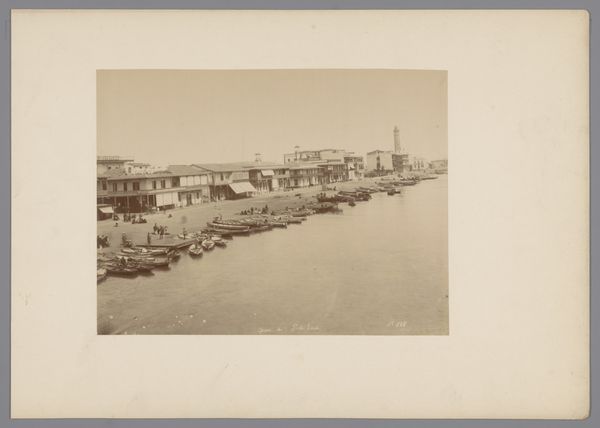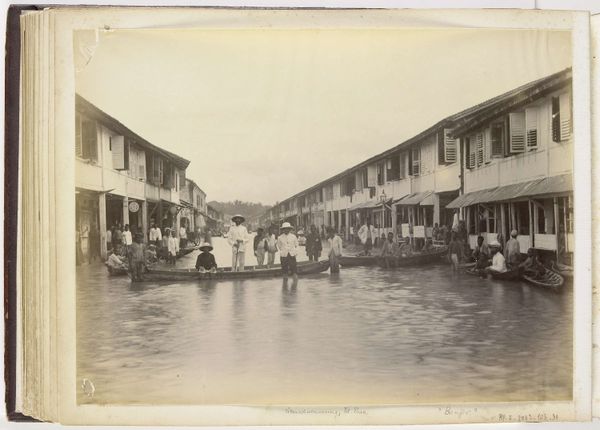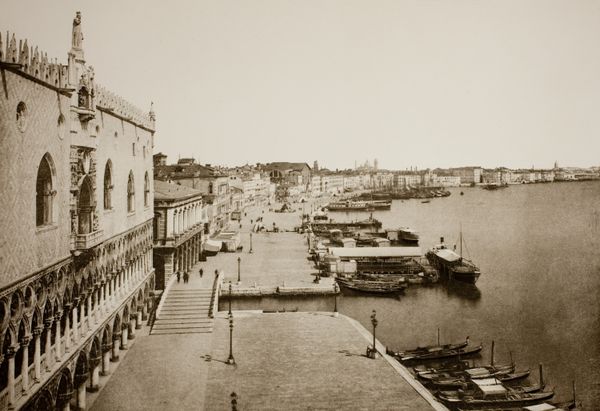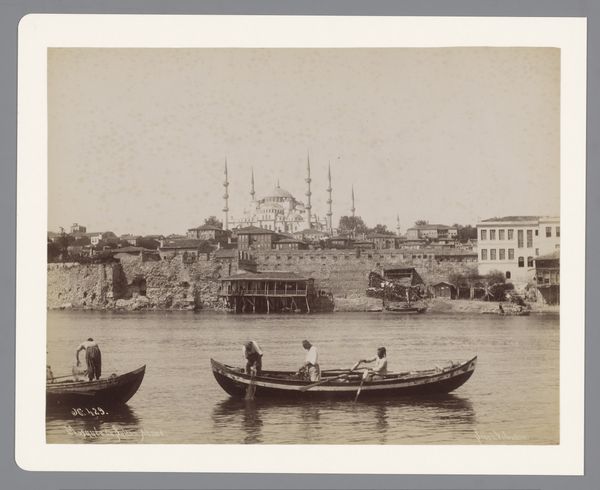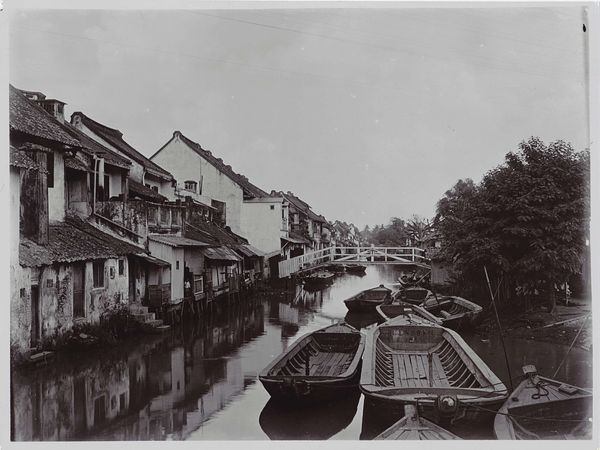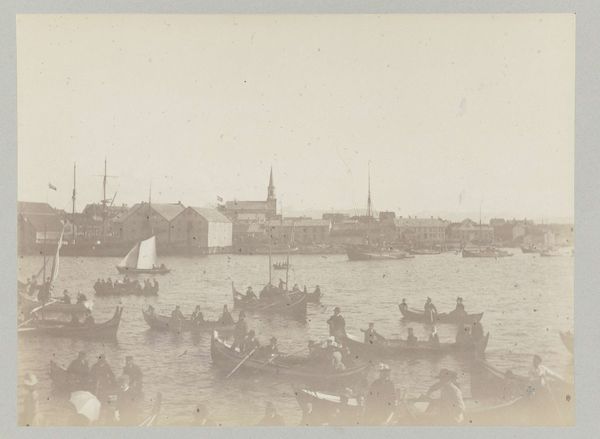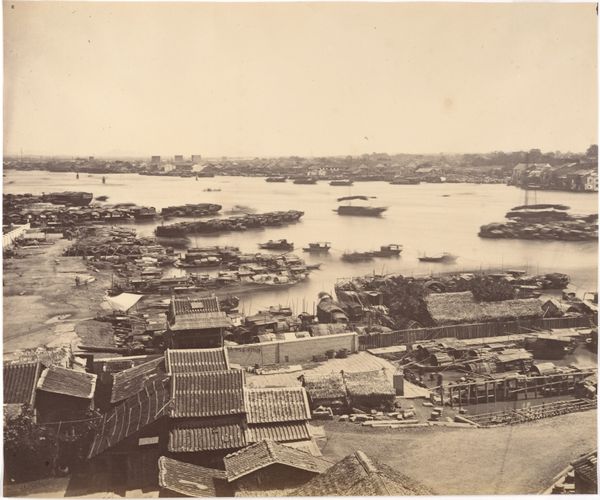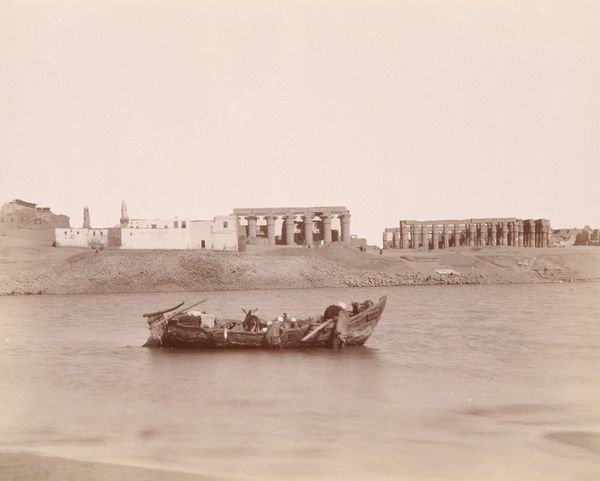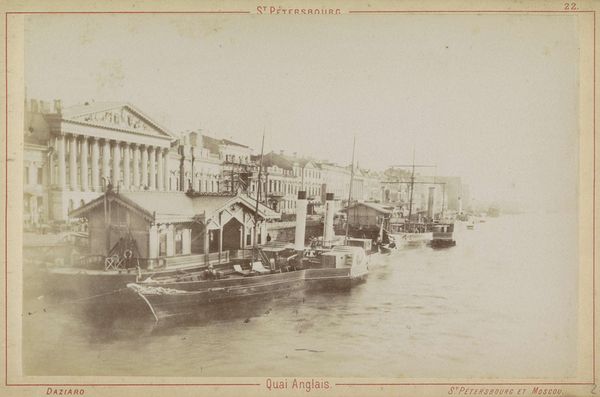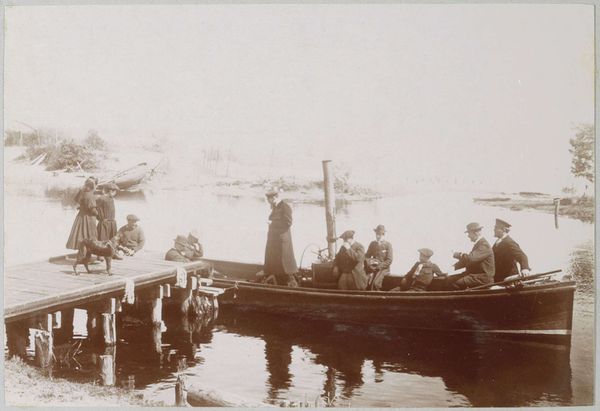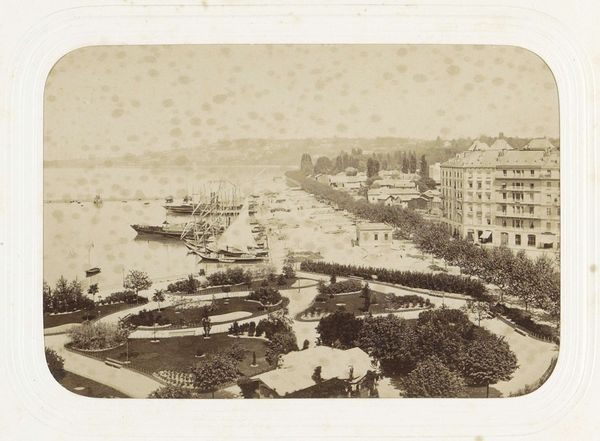
Gezicht op een kade van Port Said met op de voorgrond roeiboten c. 1870 - 1891
0:00
0:00
print, photography, gelatin-silver-print
# print
#
landscape
#
photography
#
orientalism
#
gelatin-silver-print
#
cityscape
Dimensions: height 200 mm, width 276 mm
Copyright: Rijks Museum: Open Domain
Curator: Welcome. Before you is Hippolyte Arnoux’s “View of a Quay in Port Said with Rowboats in the Foreground,” a gelatin silver print dating from around 1870 to 1891. Editor: It’s… melancholy. A sepia wash over what I presume was once a vibrant harbor scene. The density of boats and bodies suggests commerce, but the tonal register drains away any sense of buoyant energy. Curator: Notice how the architecture firmly establishes a horizontal plane in the background, creating a layered effect. The variations in shadow, especially across the buildings and the hulls of the boats, segment the composition. Editor: Segment also seems a fitting term for how communities were likely affected by this port city’s development. Port Said, born of the Suez Canal, quickly became a place of intense cultural collision and exploitation, largely impacting native Egyptian populations. Curator: Certainly, it's impossible to ignore the realities of colonialism implicit in these early photographs. Consider, too, though, the materiality of this print. The gelatin silver process yields exceptional detail, look how the light catches the ripples in the water, even in this subdued palette. Editor: But to extract pleasure from such “detail” is a fraught exercise when the technology served as an instrument of power, capturing and, in a sense, claiming this landscape. The relatively low position of the camera and tight cropping serve as witness to these structures dominating and overseeing a flurry of working-class activities at the waterfront. Curator: I would argue the framing is a tool that reveals as much as it conceals. Focusing our attention on these visual forms, however, allows us to consider the intent. Is it documentation or romanticism? Or both? Editor: Probably both. That friction makes it compelling—and deeply uncomfortable to modern eyes, well-versed in power dynamics and the critical examination of orientalism. Curator: It's a beautiful yet troubling artifact, then, prompting many layers of questions to which we continue to respond. Editor: A haunting tableau of global exchange and unequal encounters. It pushes us to grapple with the past, and reflect on how it manifests in the present.
Comments
No comments
Be the first to comment and join the conversation on the ultimate creative platform.

